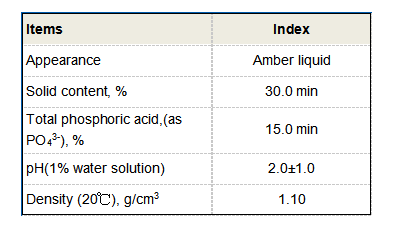coagulants and flocculants in water treatment
Coagulants and Flocculants in Water Treatment
Water treatment is an essential process aimed at making water safe for human consumption and other uses. Among the various chemical agents employed in this process, coagulants and flocculants play a crucial role in improving water quality by removing suspended solids, contaminants, and organic materials.
Understanding Coagulants and Flocculants
Coagulants are chemical substances that promote the aggregation of particles suspended in water. They work by neutralizing the electrical charges that keep these particles apart, allowing them to clump together into larger aggregates known as flocs. Commonly used coagulants include aluminum sulfate (alum), ferric chloride, and polyaluminum chloride. These substances are usually added during the initial stages of water treatment, often referred to as the coagulation phase.
Once coagulants have been added, the next step is flocculation, during which flocculants may be introduced. Flocculants are typically high molecular weight polymers that enhance the process of floc formation. They bridge the gaps between smaller flocs, promoting the formation of larger aggregates that can settle out of the water more easily. This flocculation phase is critical for the efficient removal of impurities, as it leads to the formation of visible sludge that can be easily separated from the treated water.
The Importance of Coagulation and Flocculation
The coagulation and flocculation processes are vital for several reasons. Firstly, they effectively remove turbidity from water, which is caused by suspended particles. High turbidity can harbor pathogens and reduce the effectiveness of disinfectants, making these processes critical for producing clean, safe drinking water.
Moreover, these processes help eliminate a range of contaminants, including organic matter, heavy metals, and microorganisms. By removing these pollutants, coagulants and flocculants improve the overall quality of water, making it suitable for various applications beyond drinking, such as agricultural irrigation and industrial uses.
coagulants and flocculants in water treatment

Application in Water Treatment Plants
In municipal water treatment plants, the additives are typically mixed in a designated coagulation basin, where mechanical mixers or rapid mixing techniques aid in dispersing the coagulants uniformly throughout the water. Following this initial mixing, the water is gently stirred to promote the collision and aggregation of particles during the flocculation stage. This slower mixing allows the small flocs to grow larger and settle more effectively.
After sufficient time has passed for floc formation, the flocs are usually separated from the water in a settling basin or through filtration. This removal is critical in reducing the concentration of suspended solids in the final treated water.
Environmental Considerations
While coagulants and flocculants are effective, their use must be carefully managed to minimize environmental impact. Residual chemicals from the treatment process can lead to toxicity in waterways if not adequately managed. Therefore, many treatment facilities employ advanced monitoring and treatment techniques to ensure that chemical usage remains within regulatory guidelines.
Moreover, the choice of coagulants and flocculants can also reflect environmental priorities. Biodegradable and eco-friendly options are increasingly being developed and utilized, reducing potential harm to aquatic ecosystems. Moreover, the use of natural coagulants derived from plant materials has gained attention as a sustainable alternative that might help improve water quality while being less harmful.
Conclusion
Coagulants and flocculants are indispensable in the complex process of water treatment. Their ability to remove impurities effectively not only results in cleaner drinking water but also ensures safer water for industrial and agricultural purposes. As advancements in treatment technology continue, the industry is likely to see refined methods of using these substances in environmentally responsible ways, ultimately contributing to the preservation of our precious water resources.
-
LK-319 Special Scale And Corrosion Inhibitor For Steel Plants: Advanced Solutions for Industrial Water SystemsNewsAug.22,2025
-
Flocculant Water Treatment: Essential Chemical Solutions for Purification ProcessesNewsAug.22,2025
-
Isothiazolinones: Versatile Microbial Control Agents for Industrial and Consumer ApplicationsNewsAug.22,2025
-
Scale Inhibitor: Key Solutions for Water System Scale PreventionNewsAug.22,2025
-
Organophosphonates: Versatile Scale Inhibitors for Industrial Water SystemsNewsAug.22,2025
-
Scale and Corrosion Inhibitor: Essential Chemical Solutions for Water System MaintenanceNewsAug.22,2025





